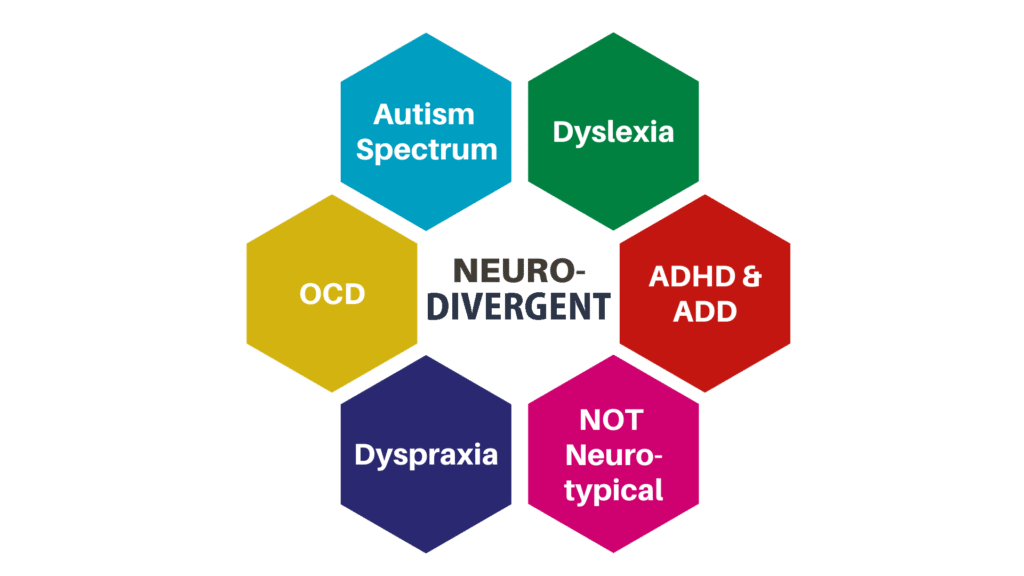What Are the Implications for Neurodivergent People in Nursing?

I’m not a nurse, however, I focused on bullying and conflict resolution for my master’s degree, wrote my first book on bullying and conflict resolution, and am a strong advocate for workplace psychological safety, especially for neurodivergents.
In preparation for speaking to a group of nurses, I was reading RN Magazine and I came across an article that disrupted my impression of nursing as solely a caring profession. This well-researched article (Leahy, n.d.) is impossible to ignore. Author Shelby Leahy confesses that workplace bullying had been on her mind for a great deal of time. Finally, she felt compelled to bring it into the open. Well, I am also compelled to address this issue with a focus on neurodiversity in nursing.
Hazing of New Nurses is Common Enough to Have a By-Line
Shelby says that “‘Nurses eat their young’ is so well known and integrated into our field of work that it is essentially a widely accepted notion that few really question or speak out about.” For example:
- Older and more experienced nurses often bully and harass nursing students.
- Many new nurses and graduate nurses are left feeling insecure because of the hazing and begin to lack confidence in themselves.
- They begin to fear that they are not good or smart enough to be nurses which is detrimental to their patients as well as the team.
- They begin to feel that the countless hours studying in nursing school for the title and position are wasted.
Given the extreme nurse shortage, this reality is a crisis that must be addressed❗
Consider how this behavior would be interpreted, or received, by a neurodivergent individual who is brand new to the nursing profession?

Hazing is well known at the college and university level, where senior students inflict emotional or physical pain or harm on junior students as a form of initiation. It never occurred to me that nurses in training would also experience hazing. Leahy’s research cited an article from the American Nurses Association that confirms hazing and abuse is prevalent, especially when veteran and younger nurses work together (Editor, n.d.).
Why Is This Happening to Our Budding Nurses?
Teams of nurses constitute what sociologists call ‘artificial groups.’ These artificial groups behave very differently from natural groups in extended families where roles and responsibilities have defined limits.
Artificial groups brought together for reasons other than natural affection tend to develop into cohesive teams over time. However, just when relationships are starting to coalesce in a hospital setting, a new cohort of nursing students arrives. This often triggers renewed hazing behavior.
New nurses are enthusiastic, passionate, and idealistic. They arrive with the latest medical techniques and are motivated to prove themselves. Unfortunately, it’s a natural thing for stressed and seasoned nurses to want to give these new nurses a “reality check.” This can dampen their idealistic enthusiasm quickly.
Having years or decades of on-the-job experience, these seasoned nurses may perceive the folly of these new ‘experts’ whose only experience is book learning. They may also feel threatened by nurses more versed in new technology and medical techniques than they are. Let’s not forget, they are also stressed!
At the lowest level, a power struggle develops when new people join the team. There’s an effort to preserve the informal power structure and keep the more pleasant jobs for the veteran nurses.

I can relate to this from an experience I had in my master’s degree program. Although my cohort was made up of experienced educators, one of our courses was comprised of both experienced educators with a decade or more of classroom experience as well as new teachers who just graduated with their bachelor’s degree. The dichotomy was so evident. The idealism of the newly graduated teachers was lightyears apart from the decades or more experience of the seasoned teachers in our cohort. I admit, it was annoying at best to listen to the new teachers argue with the seasoned teachers about educational practice. Many came across like they “knew it all” and in truth, there was so much they did not know. I wonder if this dynamic is similar to what happens in clinical practice.
The Challenge with Changing a Culture That Includes Hazing
Culture dictates the norms for how groups of people behave. Socialization is the process where new group members adjust to these norms.
Groups regard their cultures as normal. Changing culture is a complex process.
Some workplace leaders try to change bullying behavior by mandating no tolerance rules from the top. This is often tried in K-12 school settings and rarely works to change student behavior. Experience has shown that we are not likely to achieve much by calling nurses into a room and announcing that hazing must cease now. Nor would an anti-hazing workshop do anything more than check a box to say training was delivered. If anything, a heavy handed approach would drive the practice underground and make things even worse for the affected nurses.
Several practical suggestions for discouraging work-based hazing among nurses, based on extensive experience follows (Edmonson & Zelonka, 2019)
- Admit there is a problem that will continue, or get worse, if unattended.
- Eliminate work overload and other factors that may increase stress and contribute to the behavior.
- Work from the top down. Leadership must take the lead in modeling the behaviors they expect employees to follow.
- Create an environment where nurses are comfortable reporting hazing behavior.
- Address hazing behavior when it occurs in a firm, non-accusatory, manner. Use a conflict resolution approach to facilitate an appropriate resolution.
- Encourage affected nurses to seek counseling when necessary.
- Be clear that personal attacks are inappropriate, whether in-person or online, and are unacceptable.
- Encourage nurses to hold themselves accountable if they witness hazing. Hazing and bullying is often perpetrated by a minority, in every situation. Empower bystanders, the majority, to call out offenders and promote a more positive culture.
The solution to hazing in nursing lies in changing this culture, and embracing the concept that hazing has no place in the profession or anywhere else in health care. (Edmonson & Zelonka, 2019)
Those Who Are Neurodivergent Experience Hazing Behaviors Differently

Neurodivergent individuals are often more susceptible to the negative impact of hazing in the workplace. Employees in the autistic spectrum, for example, may have a meltdown in reaction to bullying behavior. Leadership will often not see the subtle bullying that has occurred and, consequently, the autistic nurse is disciplined or fired because of the meltdown. The reality is that it’s not their fault. The workplace is not psychologically safe for them. Providing a psychologically safe work environment is the responsibility of leadership.
Even neurodivergent nurses who are not autistic can have serious emotional consequences when they are bullied. Consider that most university students, who have overcome what for most of their lives was labeled a disability, have self-esteem issues. Many have been bullied since childhood because of their cognitive differences. They’ve escaped that disability sentence by working harder than neurotypicals to be successful. They hope and believe they’ve left that stigma behind them and can emerge in their new profession as outstanding caregivers. When they are bullied in the workplace, it triggers a lifetime of baggage and can be debilitating.

This would not be an issue if the workplace were psychologically safe. Rather, they’d shine and their divergent thinking and unique skills in areas such as problem solving, efficiency, detail accuracy, spatial intelligence, and empathy for those who struggle would enhance patient care on their team.
For specific suggestions on how to create psychological safety at work for neurodivergent employees, read my articles, Neurodiversity and Psychological Safety at Work and Creating Safe Spaces for Neurodivergence in the Workplace.
What Can Each of Us Do Right Now?
We can cultivate awareness, acceptance, and appreciation of the diversity of humanity in all its permutations. Nursing is physically and mentally stressful. To retain and recruit nurses, we need to foster healthy workplaces.
A harmonious, emotionally safe environment will create a welcoming and healthy environment for nurses and their patients. Nurses are the medical professionals most responsible for successful primary care. Yet, the current culture in many nursing environments pushes desperately needed nurses out of the field or disempowers them to perform at their best. It’s time we create a kinder, healthier, more supportive nursing community for all nurses and nurse faculty. Without it, nursing as a profession will struggle to recruit and retain nurses.
References:
Clarke, C. M., Kane, D. J., Rajacich, D. L., & Lafreniere, K. D. (2012). Bullying in undergraduate clinical nursing education — PubMed. The Journal of Nursing Educaton, 269–276. https://pubmed.ncbi.nlm.nih.gov/22495922/
Editor. (n.d.). Violence, Incivility, & Bullying | Work Environment | ANA. American Nurses Association. Retrieved February 10, 2022, from https://www.nursingworld.org/practice-policy/work-environment/violence-incivility-bullying/
Edmonson, C., & Zelonka, C. (2019). Our Own Worst Enemies: The Nurse Bullying Epidemic. Nursing Administration Quarterly, 43(3), 274. https://doi.org/10.1097/NAQ.0000000000000353
Hampton, D., Tharp-Barrie, K., & Kay Rayens, M. (2019). Experience of nursing leaders with workplace bullying and how to best cope. Journal of Nursing Management, 27(3), 517–526. https://doi.org/10.1111/JONM.12706
Leahy, S. (n.d.). Nurses Eat Their Young; An Insight Into Systematic Hazing and its Implications on Patient Care. RN Journal. Retrieved February 10, 2022, from https://rn-journal.com/journal-of-nursing/nurses-eat-their-young
Seibel, M. (2014). For us or against us? Perceptions of faculty bullying of students during undergraduate nursing education clinical experiences. Nurse Education in Practice, 14(3), 271–274. https://doi.org/10.1016/j.nepr.2013.08.013
Smith, C. R., Gillespie, G. L., Brown, K. C., & Grubb, P. L. (2016). Seeing students squirm: Nursing students’ experiences of bullying behaviors during clinical rotations. Journal of Nursing Education, 55(9), 505–513. https://doi.org/10.3928/01484834-20160816-04
Photo credits
Eda Hoyman / iStockphoto standard license
lightspeedshutter /iStockphoto Standard License
Creative Commons from Canva
Susan Fitzell, M.Ed., CSP
CLICK HERE to visit the articles page.

Download Neurodiversity in the Workplace! – Free!
Bring Susan Fitzell, M.Ed., CSP
Top Neurodiversity Speaker
To YOUR Organization!
